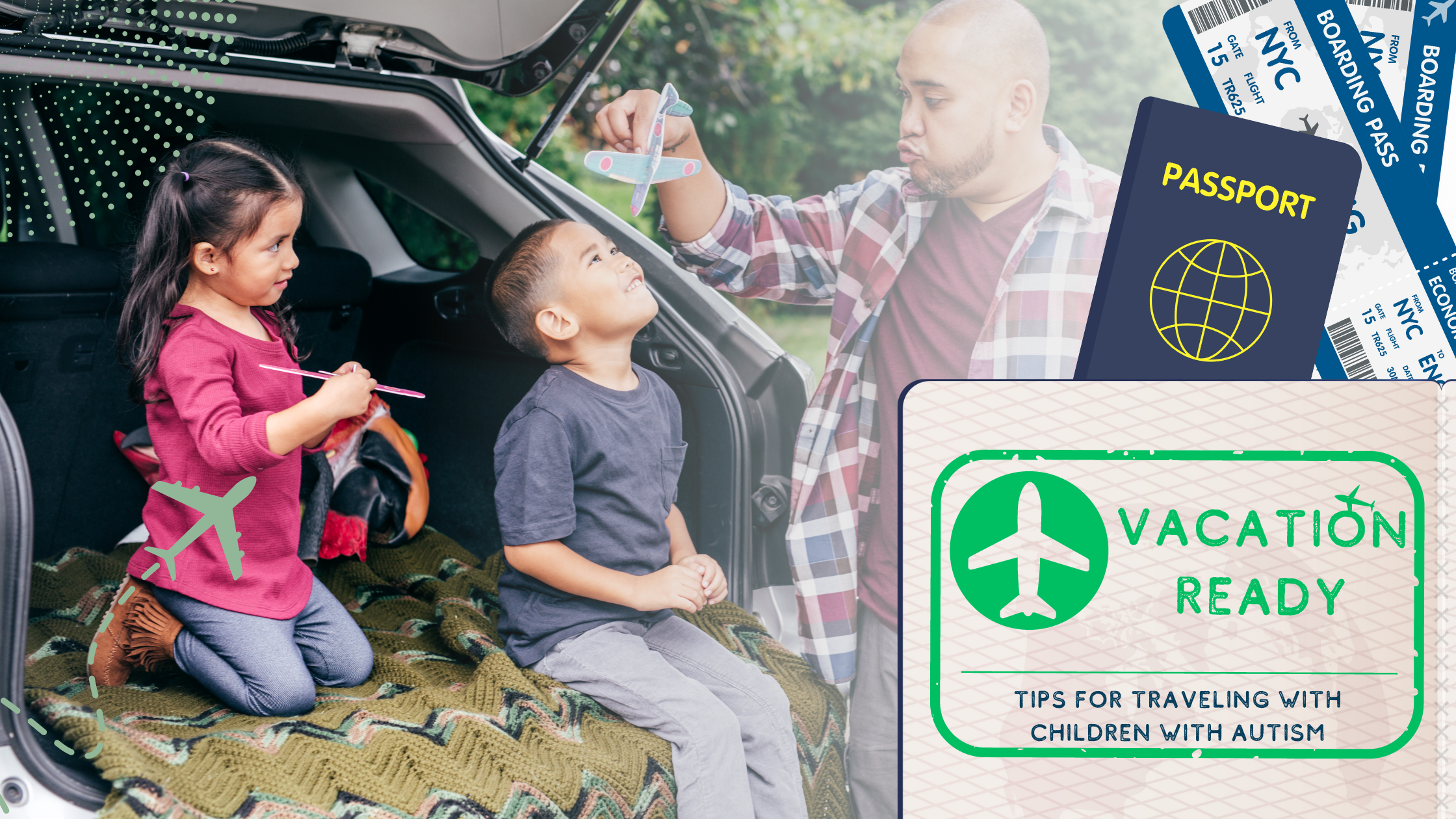Vacation Ready: Tips for Traveling with Children with Autism
May 24, 2024

Planning a vacation with a child with Autism can seem daunting, but with the right preparation and strategies, it can be an enjoyable and rewarding experience for the whole family. In this blog post, we’ll share practical tips and ideas for traveling with children with Autism, whether you’re embarking on a road trip or heading to a new destination. Let’s make your next vacation a smooth and memorable adventure!
Plan Ahead:
–> Start planning your trip well in advance to minimize stress and ensure a smooth travel experience:
- Choose accommodations wisely: Research hotels or vacation rentals that offer amenities like quiet rooms, kitchenettes for preparing familiar meals, and sensory-friendly spaces.
- Create a visual schedule: Use visual schedules or calendars to help your child understand the sequence of events leading up to and during the trip, reducing anxiety and uncertainty.
- Pack strategically: Make a packing list of essentials, including comfort items, sensory toys, favorite snacks, and any necessary medications. Pack a travel bag with these items for easy access during the journey.
Keep Routines Consistent:
–> Maintaining familiar routines can help your child feel more comfortable and secure during travel:
- Stick to regular meal and bedtime routines as much as possible, even while on vacation.
- Plan rest breaks during road trips or long flights to allow your child time to decompress and recharge.
- Bring along familiar items from home, such as bedding, stuffed animals, or favorite books, to create a sense of continuity in unfamiliar surroundings.
Choose Autism-Friendly Activities:
–> Select activities and attractions that cater to your child’s interests and sensory needs:
- Research destination attractions: Look for destinations with sensory-friendly options, such as quiet beaches, nature trails, or museums with sensory-friendly exhibits.
- Consider interactive experiences like animal encounters, art workshops, or outdoor adventures that offer opportunities for sensory exploration and engagement.
- Plan downtime: Schedule downtime in your itinerary to allow your child to unwind and recharge between activities, minimizing sensory overload and meltdowns.
Be Flexible and Patient:
–> Flexibility is key when traveling with children, especially those with Autism:
- Be prepared for unexpected changes or disruptions to your plans, and approach challenges with patience and understanding.
- Have a backup plan in case of meltdowns or sensory overload, such as a quiet space to retreat to or calming activities to help regulate your child’s emotions.
- Communicate openly with your child about any changes or deviations from the original plan, using simple language and visual cues to help them understand.
Traveling with a child with Autism requires careful planning, patience, and flexibility, but it can also be an enriching and rewarding experience for the entire family. By following these tips and preparing accordingly, you can create memorable vacation experiences that cater to your child’s unique needs and interests. Remember to focus on enjoying the journey together and making cherished memories that will last a lifetime!
